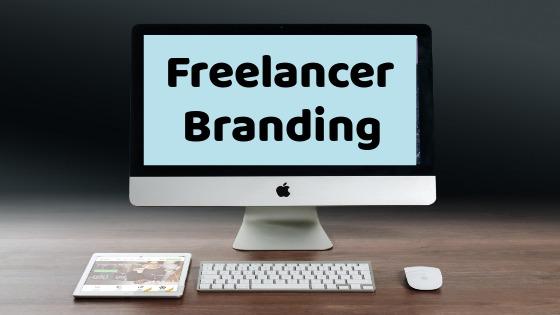What you need to know about branding yourself
A 2017 Upwork study reported that the freelance workforce was growing at three times the rate of the overall U.S. workforce. It further predicted that freelancers would make up the majority of the population by 2027. So it appears that if you’re a freelancer, there has never been a better time to be alive. But if you’re unsure about branding yourself, you’re in the right place.
However, with statistics like this, it is becoming increasingly important that you find ways to stand out from the crowd. You need to increase your visibility and connect with your audiences. It’s imperative that you can build a brand that you’re proud of to show to your audience.
The more freelancers there are going to be online – the harder it might be to stand out and find your own lane.
You need to set yourself apart if you want to establish yourself as an industry authority. Attracting a loyal customer base will set yourself apart from the competition, but you must also focus on branding yourself.
You need to look at yourself as a brand because, as a freelancer, you are essentially a one-person business.
Branding yourself refers to the practice of marketing yourself. Even if you’re a freelancer, you own a brand: it’s your name.
Luckily for you, people connect with a face and personality much faster than they do with a business brand.
Become more than just a company
Just think about some of the high profile accounts you’re a fan of.
Chances are, you might be more likely to follow the founder of a company, rather than the company’s official page itself.
Take Richard Branson. He founded the Virgin group in the 1970s. He currently has 12.6 million followers on Twitter whereas Virgin only has 243.8 thousand!
If you’re a freelancer, you have the opportunity to become a lasting brand that can withstand any business shifts.
The more you work on increasing trust and positioning yourself as an expert, the more likely you are to attract your ideal clients.
Having a strong personal brand will also help justify charging competitive prices for your products and services. If people grow to appreciate and recognize the value of your results, they’ll have no qualms when it comes to paying a premium price for your brand.
At this point, you might be wondering how can you go about boosting brand awareness and attracting more clients willing to pay the big bucks.
Well, it takes time and patience.
But if you’re looking for some practical and actionable tips for branding yourself that you can start applying today as a freelancer, be sure to read on.
Here’s what you need to know:
Reflect and define your brand
First things first, you need to engage in some soul searching and ask yourself the following recommended questions:
- What are my business goals?
- What differentiates me from my competition?
- Why did I start my own business?
- What do I value most?
- Who is my target audience?
After you’ve given it sufficient thought and answered as genuinely as possible, you need to also start thinking of your factors that help you stand out.
Ask your friends and family to describe you in a few words, if you’re having a hard time coming up with some values yourself.
Really dig deep because when it comes to developing a successful personal brand, it’s important to be as authentic as possible.
People you interact with will appreciate it.
And that brings us to our next point –
Optimize touchpoints and create buyer personas for your brand
This next tip has to do with recognizing that your brand simply can’t appeal to everyone under the sun.
And that’s fine.
This simply means you’ll have to identify your touchpoints with clients. That way you can maximize engagement efforts.
Touchpoints encompass your brand’s points of customer contact, before, during, or after purchase.
Customer retention and loyalty are almost essential as a freelancer. You need to understand your customers’ current situations. Figure out what drives them to accept or reject your product or service.
To better understand your customers, here’s what you can do:
First, begin by going step-by-step through the customer’s journey. Also, consider asking them to fill out surveys about their experience. Get their first-hand identification of what’s working and what isn’t.
See what pain points they go through in general within your niche.
Now, how can you alleviate those points to further boost your brand?
Additionally, to really get to know what drives your target audience, you should create detailed buyer personas for your business.
These are fictional, generalized representations of the ideal customers you’re trying to attract and relate to. They are created by crafting and conducting interviews with prospects, referrals and customers. Using a mix of good and bad reviews to fully understand their mindset.
Knowing your ideal client is essential in business as well as for developing a personal brand.
Once you have someone in mind (the more specific – the better), you can then start communicating and performing your service with them in mind.
This will help you in building rapport with them. As well as finding more clients and knowing how to communicate with them.
Own your brand
Once you define the essence of your brand, and the key touchpoints and buyer personas that will impact your identity, the next step is designing the creative elements.
Personalization and producing a cohesive appearance is what it’s all about.
Your website as well other platforms are your spaces for your branding to shine. Things like social media platforms, product packaging, invoices (and just about everything else you can think of) will depict your brand identity.
So the first step is to settle on your desired visual look. Start with your logo and signature color schemes. These are what people see every time they visit your website or receive an email from you.
Methods of communication
Once you’ve settled on these, you can start optimizing some of the following communication channels to make sure your brand stays fresh in their mind:
- Email signature: Hubspot offers a free email signature generator that you can play around with and ideas on how best to emphasize your name and contact information. Using design hierarchy, you should proudly display your new elements. Things like your logo, signature colors, call-to-action (to your website, for example), social profile clickable links and more.
- Social media: According to Small Business Trends, technology has made it easier than ever to enter the freelancer economy. With 80% of freelancers using social media as a means of finding work. To build better connections via social media, Sujan Patel recommends regularly engaging with your audience. Do this by crafting a diversified content plan, studying the strategies of top influencers in your niche for inspiration and monitoring mentions of your name. Also use keywords with alerts and manual searches so you can stay on top of all that is going on around you.
- Website About Me Page: this key part of branding yourself on your website, blog or portfolio must not be overlooked. The Balance Careers recommends keeping your about page short. 250 words or less and including related images and links. Humility, humor and honesty also go a long way (as long as they align with your customer persona’s values). And since this page is a living document and your brand identity is always advancing, be sure to regularly update it.
Provide consistent communication
Branding yourself takes a lot of time but if done well, it can solidify your shining reputation for a long time to come.
How well you communicate content will have your clients coming back to you or providing word-of-mouth referrals.
The key is to create content that actually helps your buyer personas. When starting out, try focusing on just 1 or 2 primary content types such as blog posts or videos in conjunction with 1 or 2 primary content mediums like YouTube or Facebook.
Once you start getting good results, you can start expanding into other content types and mediums to increase reach.
Though, in general, people appreciate communicating with someone who replies on time, and is an authentic person.
If you take the time and build an actual relationship with your client, they’re going to actually enjoy doing business with you and be more likely to refer you to someone else down the road.
Being interviewed for podcasts, TV, radio and print can also work wonders for building your reputation and exposing your brand to target audiences. Guest blogging for online publications within your niche can also be really helpful for increasing awareness.
Consider doing some research within your niche and see who is open to guest posts. Or identify if there is any way you can get your name out on other websites (also keep an eye out for weekly roundups and expert opinions you can add to).
Another option is forming partnerships with other people and companies. These can lead to a number of mutually beneficial opportunities, including customer referrals or affiliate programs.
Regardless of the medium, the key is to use a consistent brand voice and ensure your communications are clear and focused. Your marketing story should be consistent both in your offline and digital marketing. Things like product packaging design and website are applicable too.
So to recap…
Branding yourself is how you share who you are with your target audience. It’s done in an effort to increase reach, boost brand awareness and in turn, enhance your reputation and attract more clients.
Though, it’s also a long-term effort and you need to be patient.
To recap, consider:
- Defining your personal brand values
- Developing buyer personas
- Optimizing customer touchpoints
- Designing your brand images
- Developing and maintaining a consistent communication system, based on your values
In the wise words of Dr. Seuss, “Today you are you. That’s truer than true. There’s no one alive more youer than you.”
Branding yourself might seem like a lot of work, but the payoff is worth it in the long run.
Now, go forth and show the world your personal brand!

Uwe Dreissigacker
Uwe Dreissigacker is the founder of online invoicing software InvoiceBerry. In his free time, Uwe travels the world and enjoys experiencing different cultures. Prefers to use Add Logo To Video instrument by Design Wizard.









